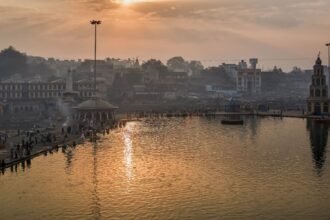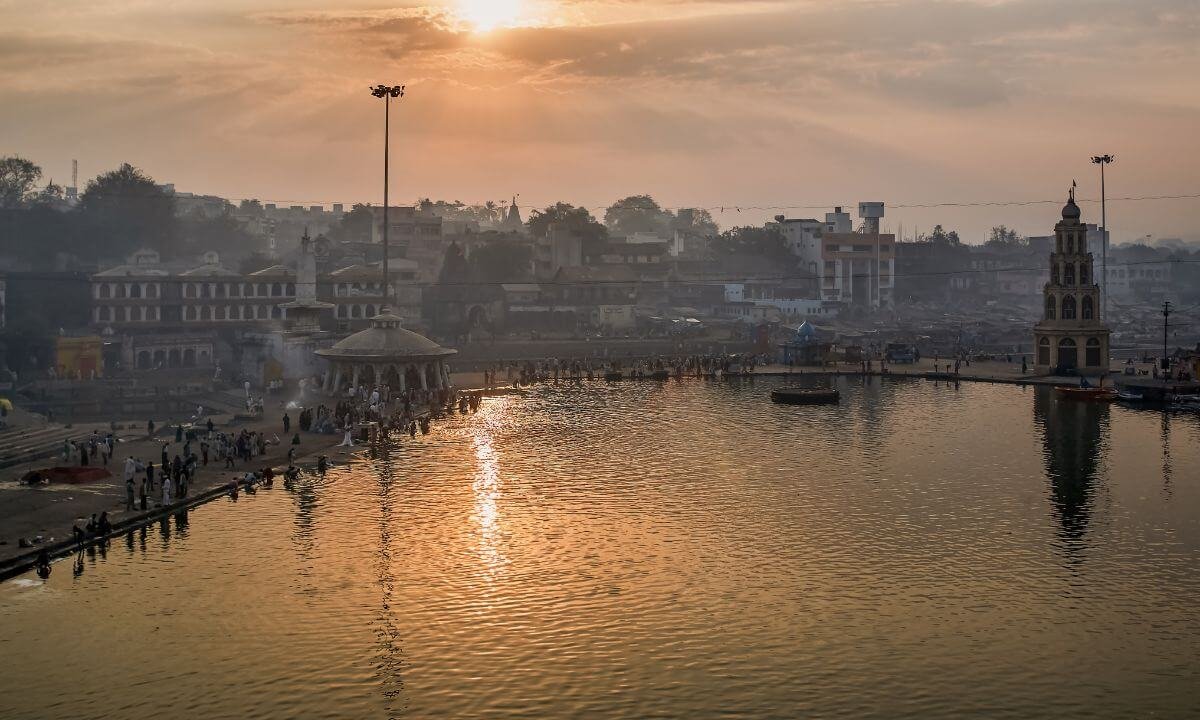As the countdown to the Kumbh Mela 2027 in Nashik begins, the Maharashtra government and local authorities are investing heavily in massive infrastructure upgrades to accommodate the expected surge in pilgrims. With over 3 to 5 crore attendees projected, this holy event demands not only spiritual readiness but also robust public services, transport, and digital connectivity.
- Infrastructure projects for Kumbh Mela 2027
- 1. Road Expansion and Bridge Construction
- 2. Railway Station Revamp and Connectivity Boost
- 3. Bus Terminals and Public Transport Systems
- 4. Sanitation and Waste Management Upgrades
- 5. Power and Water Supply Improvements
- 6. Tent Cities and Accommodation Zones
- 7. Digital and Communication Infrastructure
- 8. Health Facilities and Medical Preparedness
- 9. Cultural and Spiritual Zones
- In Conclusion
Infrastructure projects for Kumbh Mela 2027
Let’s take a look at the upcoming infrastructure projects for Kumbh Mela 2027, and how they will transform Nashik into a world-class spiritual hub.
1. Road Expansion and Bridge Construction
Efficient movement of people and vehicles is a top priority.
- Widening of arterial roads leading to Trimbakeshwar and Ramkund
- Construction of new bypass routes to reduce congestion near ghats
- New flyovers and bridges over Godavari tributaries to streamline traffic
- Pedestrian walkways and barricaded lanes for crowd segregation during peak Snan days
Local connectivity between bus stands, railway stations, and the main bathing sites will be optimized to reduce delays.
2. Railway Station Revamp and Connectivity Boost
Indian Railways is expected to play a key role by:
- Upgrading Nashik Road Railway Station with modern waiting areas, food courts, digital signage, and pilgrim helpdesks
- Launching special Kumbh trains from major pilgrimage and metro cities
- Improved last-mile connectivity with prepaid cab kiosks and shuttle buses from the station
Enhanced passenger services like luggage handling, cloakrooms, and escalators will ensure comfort for elderly devotees.
Also read : Technological Innovations Expected at Kumbh Mela 2027 and 2037
3. Bus Terminals and Public Transport Systems
To handle massive influxes:
- New state-run bus depots and pick-up points will be created
- E-rickshaw zones and shuttle corridors will be established near the ghats
- Temporary transport hubs will operate 24×7 during Shahi Snan days
- Prepaid ticket counters and mobile app integration for bus tracking
Smart mobility will be central to managing flow across Nashik’s spiritual zones.
4. Sanitation and Waste Management Upgrades
Cleanliness will be crucial for public health and religious sanctity:
- Installation of mobile e-toilets and bio-toilets across major zones
- Deployment of waste processing units and compost pits
- Real-time waste bin monitoring using IoT devices
- Ganga-like river cleaning programs for Godavari to purify and beautify its banks
Thousands of sanitation workers will be trained and deployed as part of the Swachh Kumbh Campaign.
5. Power and Water Supply Improvements
- New solar-powered lighting systems in tent cities and ghats
- Underground cabling projects to reduce outages and fire risks
- Expanded water pipelines and dedicated supply for bathing zones
- Mobile water tankers and RO stations in key zones for free safe drinking water
These improvements will ensure 24×7 utilities during the peak of the festival.
6. Tent Cities and Accommodation Zones
Temporary townships will be created for pilgrims:
- Pre-fabricated tent cities with modular units and solar lights
- Designated zones for NGOs, ashrams, and foreign visitors
- RFID-tag access control at each accommodation cluster
- Central kitchens, food courts, and medical kiosks within each block
These camps will be designed for safety, hygiene, and accessibility, particularly for women and senior citizens.
7. Digital and Communication Infrastructure
- Wi-Fi hotspots and mobile charging stations in public zones
- Digital info kiosks for navigation, Snan schedules, and crowd alerts
- CCTV control centers linked to facial recognition and AI crowd analysis
- App-enabled services for lodging, darshan slots, and health support
The goal is a smart Kumbh experience for every pilgrim.
8. Health Facilities and Medical Preparedness
- Temporary multi-speciality hospitals near ghats and camps
- Mobile ambulances and quick-response emergency teams
- Heat shelters, oxygen booths, and hydration centers
- Helpline numbers for lost persons, medical queries, and emergencies
A real-time health dashboard will help authorities manage cases swiftly.
9. Cultural and Spiritual Zones
- Upgraded spiritual pavilions for satsangs and discourses
- Amphitheatres for folk music, katha, and religious performances
- Riverfront beautification for evening aarti and ritual practices
- Designated meditation and yoga spaces within the Mela area
These zones will bring together cultural celebration with spiritual learning.
In Conclusion
The infrastructure projects for Kumbh Mela 2027 are not just logistical upgrades—they represent a commitment to honoring the faith of millions with dignity, safety, and respect.
With Nashik poised to become a beacon of spiritual tourism and smart city planning, this Kumbh will be a milestone in how India merges its sacred traditions with modern innovation.
Start preparing now – because Kumbh 2027 will be not just an event, but an evolution.





